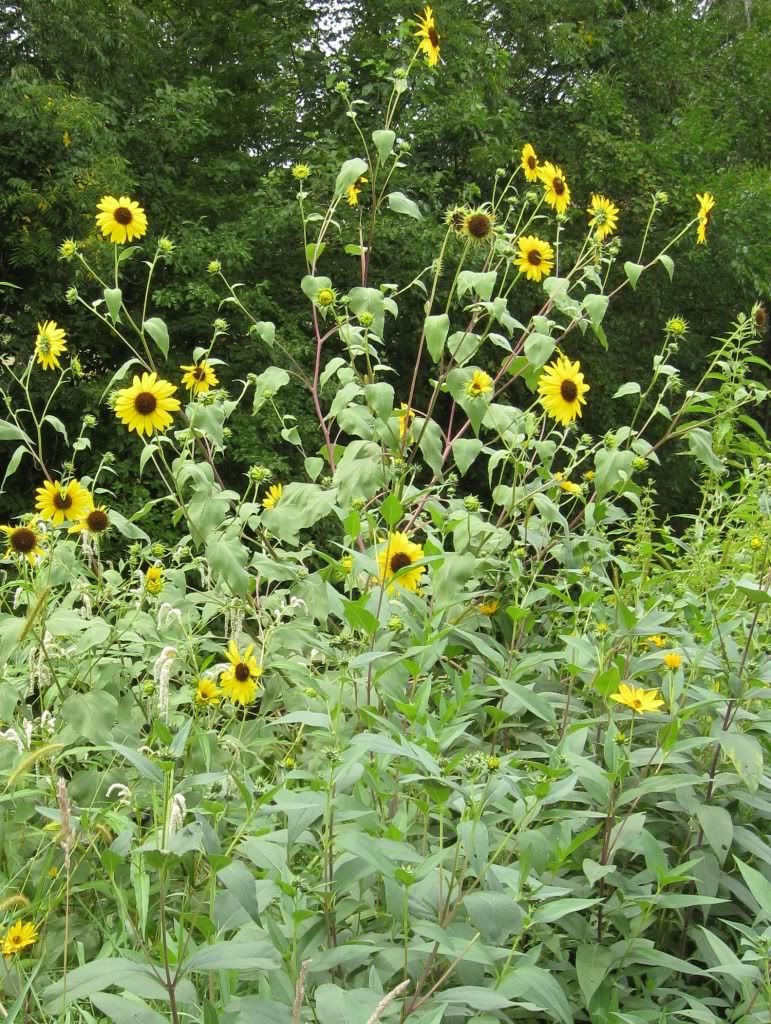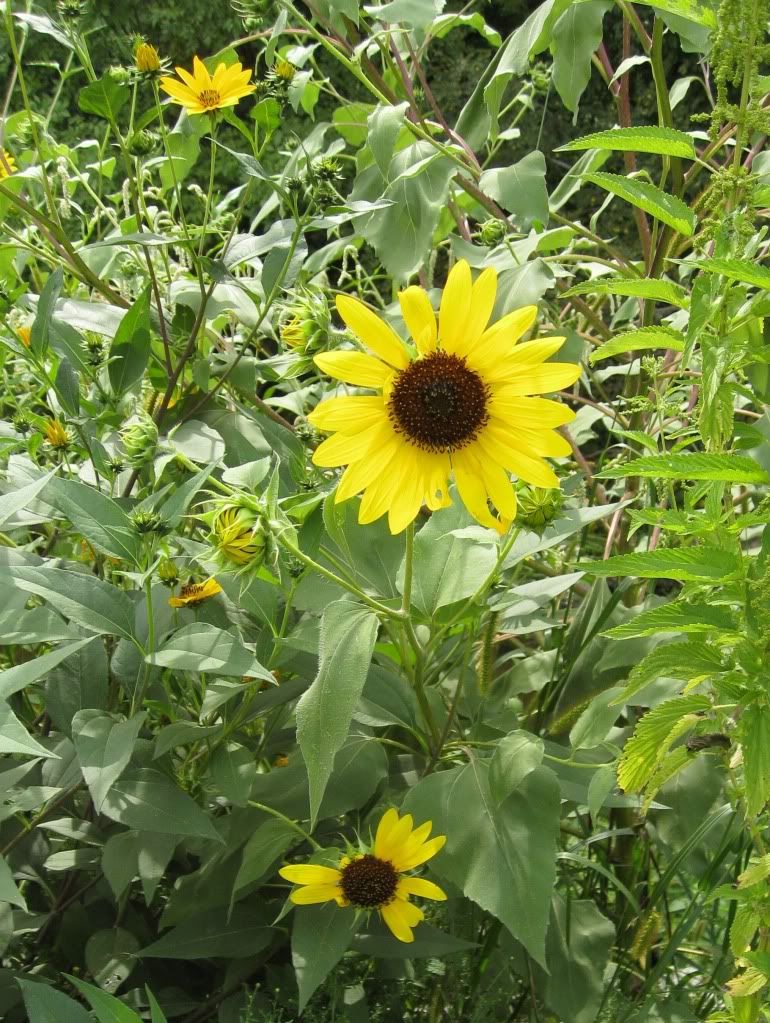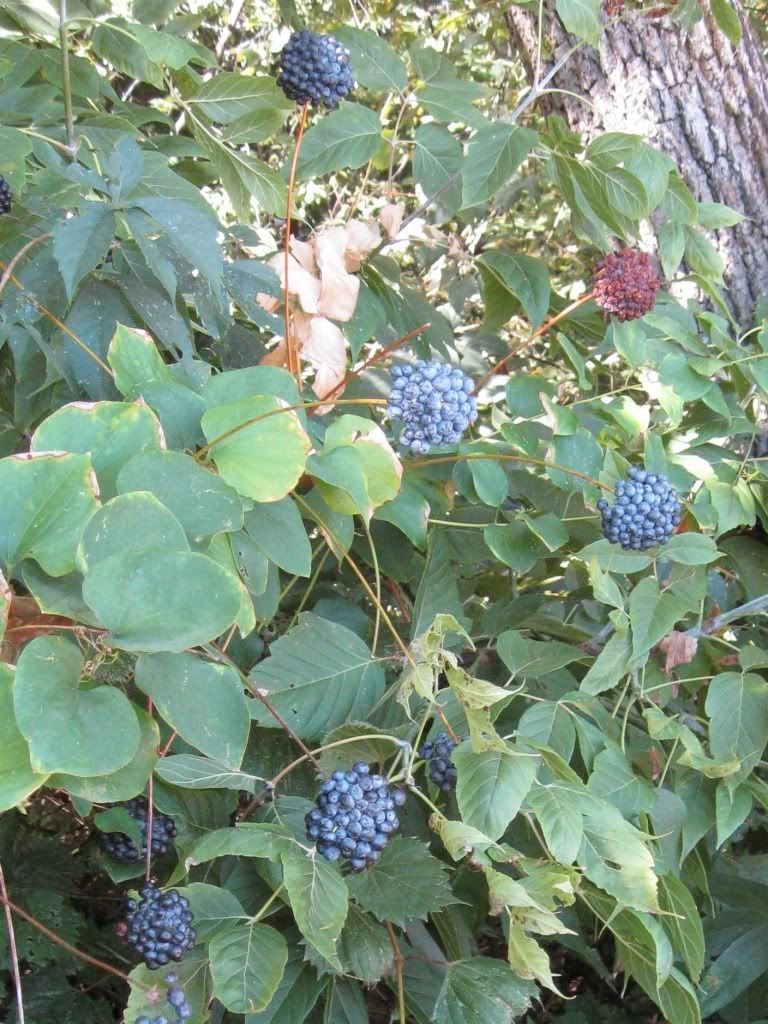I scheduled this week’s open thread to go up early, because I will be away from my computer observing the Jewish holiday of Yom Kippur. All topics are welcome.
After the jump I’ve posted photos of common sunflower, one of the most eye-catching late summer wildflowers in Iowa. You may have seen it blooming along roadsides. As a bonus, I enclosed pictures of berry clusters from a greenbrier plant, which I’d never seen before this year, to my knowledge.
The Lady Bird Johnson Wildflower Center at the University of Texas describes Helianthus annuus, the common sunflower, as follows:
Common sunflower is a widely branching, stout annual, 1 1/2-8 ft. tall, with coarsely hairy leaves and stems. The terminal flowers heads are large and showy, up to 5 in. across. A tall, coarse leafy plant with a hairy stem commonly branched in the upper half and bearing several or many flower heads, the central maroon disk surrounded by many bright yellow rays. Yellow ray flowers surround brown disk flowers.
The state flower of Kansas. The heads follow the sun each day, facing eastward in the morning, westward at sunset; the name in Spanish means turns toward the sun. The plant has been cultivated in Central North America since pre-Columbian times; yellow dye obtained from the flowers, and a black or dull blue dye from the seeds, were once important in Native American basketry and weaving. Native Americans also ground the seeds for flour and used its oil for cooking and dressing hair. In the 19th century it was believed that plants growing near a home would protect from malaria. In the United States and Eurasia seeds from cultivated strains are now used for cooking oil and livestock feed. Many variants have been developed, some with one huge head topping a stalk 9-16 ft (3-5 m) tall, others with maroon rays.
Here’s a closer view of one Helianthus annuus flower-head. Note that the smaller yellow flower in the upper left of this picture, and in the lower right of the above photo, are not sunflowers, but something else from the aster family. I haven’t been able to identify that flower, and I welcome input from Bleeding Heartland readers. I was wondering if it might be Jerusalem artichoke.
Finally, here are two pictures of berry clusters I found a couple of weeks ago in Windsor Heights. After looking at the photos, a friend identified the plant as one of the greenbrier plants in the catbrier family. To me it looks the most like Smooth carrionflower or carrion-flower (Smilax herbacea), though that plant is often confused with Blue Ridge carrion-flower (Smilax lasioneura). I will have to find this plant next spring to see if the flowers smell as bad as their reputation. Both species are native to Iowa and many other states in the eastern or central part of the country, but the USDA plants database doesn’t show confirmed sightings of either plant in Polk County. Carrion-flowers provide habitat for some birds, and the berries are a food source for many birds and mammals.





3 Comments
Mystery found
I have noticed this plant in my yard and finally figured out it may be the carrion plant..have two sets of them ..male and female stalks growing in Polk county ..Des Moines ..ingersoll park neighborhood ..nice to finally figure it out 🙂
rhyscameron Sun 14 Aug 12:48 PM
I love annual sunflower, as do birds, and it's a respectable native plant...
…but it is legally listed as a noxious weed in Iowa. Now that most rowcrops are genetically engineered to tolerate various herbicides, which are sometimes sprayed in windy weather and generously shared with rural neighbors, why can’t we legally grow annual sunflowers if we want? My farmer neighbor’s herbicides and insecticides are more likely to wander onto my land (and they have) than my flowers are to wander onto his.
Furthermore, Iowa’s noxious weed law is very unevenly applied. Most of the annual sunflowers I’ve seen in the past fifteen are not on or next to crop fields. They are on or next to construction sites, including road projects, and on urban and suburban disturbed soil.
I agree that the smaller yellow flowers in the photo may be Jerusalem artichokes, but I can’t…quite…see them well enough to tell. If I could just step into those nice photos…:-)
PrairieFan Wed 26 Apr 4:35 PM
Oops...
…Sorry, that should have been “fifteen years.” I remember seeing annual sunflowers fairly often on crop fields back in the Seventies, but no longer. They’ve gone the way of milkweed.
PrairieFan Wed 26 Apr 4:36 PM